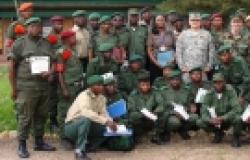Between Pragmatism and Structural Change: Future Security and Justice Programming in Difficult Places

Tom Kirk explores a recent ODI report on the future of justice and security programming, and comments upon what the JSRP’s research findings from the world’s most difficult places may mean for ongoing debates.
Lisa Denny and Pilar Domingo at the Overseas Development Institute (ODI) recently produced a timely short report on the future of security and justice programming. On the one hand, it responds to a growing movement among development practitioners to seriously consider how political economy analysis (PEA) and problem-driven iterative adaptation (PDIA) approaches to programming can be harnessed. On the other, it acknowledges recent pushes for aid agencies to contribute to responses to emerging transnational security challenges. Whilst agreeing with the thrust of their report, in this post I draw upon the JSRP’s research to explore what these developments may mean for understanding and addressing insecurity ‘difficult’ places.
As the authors argue, PEA and PDIA should be seen as two sides of the same coin, with the former enabling the latter, and the latter questioning the assumptions and claims of the former. Indeed, calls for politically savvy, yet constantly tested, probed and iterated programmes – a way of ‘doing development differently’ – are in no small part an acknowledgement of development’s long history of conducting and then ignoring political economy analyses. They are also born out of repeated frustrations with top-down attempts to transfer (or impose) alien institutional models to foreign societies.
Instead, PDIA seeks to re-orientate development interventions to specific development problems. To do this it challenges programmes to identify and address problems through long inception phases or as windows of opportunities arise. Perhaps unsurprisingly, its proponents often argue that ordinary people living in difficult places are best placed to know their own needs and when desired changes may become feasible. Furthermore, they are more likely to act collectively and form the types of coalitions with power-holders that are necessary to tackle the political causes of the problems they highlight. To facilitate this, it is suggested that outsiders must work at ‘arm’s length’ and, in most cases, only assist when and where requested.
In this sense, many practitioners are simultaneously calling for more freedom to set their own agendas on a case by case, or context by context, basis, and to realise the principles of country ownership that many have only paid lip-service to since the 2005 Paris Declaration. Whilst the evidence for such approaches is limited, what does exist promises programmes that take time to understand people’s needs and what is realistic. Furthermore, PDIA encourages donor agencies and their governments to accept that programmes will often fail on the road to success, with setbacks providing pragmatic practitioners with opportunities to gain deeper understandings of the contexts they work in.
 Iterative, all encompassing and up-to-date PEA
Iterative, all encompassing and up-to-date PEA
With respect to PEA, the JSRP’s research supports established claims that analysts must look above, beneath and in-between the state and its institutions to understand the drivers of (in)security in difficult places. This requires that both international and sub-national actors are recognised as being intimately involved in security provision and conflict dynamics, and that the links between them aid the flow of ideological and material resources. As illustrated by research on the Congo, such relationships can enable non-state actors to become public authorities in their own right, sometimes in collaboration with the state and sometimes in opposition to it.
At the same time, analysts must not shy away from turning their gaze upon international forces or development agencies whose interventions in difficult places also make them de facto public authorities. This is particularly true of supposedly stateless places in which international actors provide security and justice as a means to pursue their own ends. Nonetheless, even the most encompassing PEA study will quickly become redundant if it is not consistently updated to reflect the fast moving events and shifting power structures that such complexity creates.
There is also the need for programmes to think hard about who is best placed to conduct PEA. Although outsiders are able to put analyses into common frameworks that clearly show links, incentive chains and resource flows (on a colourful PowerPoint) between different actors; local people are much more likely to have an ingrained understanding of the informal social norms and institutions that underpin politics. Indeed, in many of the places the JSRP studies civil society can be a source of information on the local dynamics animating security and justice arrangements. However, researchers must remain aware that knowledge production in difficult places is rarely removed from the political economy of aid itself.
Local ownership, responsibility and doing no harm
Whilst enabling PEA to become more relevant to programming in difficult places is relatively uncontroversial – amounting to more, often, and better – operationalising PDIA is much more challenging. To begin with, its suggestion that programmes must be ‘problem driven’ raises a number of questions. For example, as Denny and Domingo identify, who is allowed to define the problem and whose voices are heard? In a tentative answer, they suggest a mix of stakeholders, including what they term as the ‘end-users’ of security arrangements, should be consulted.
What happens, however, when the problems and preferred solutions identified by states, sub-national power-holders, technical experts and ordinary people diverge? As JSRP research shows, in some cases security and justice provision by seemingly autonomous local armed groups can ‘make sense’ to populations all too aware of the multiple deficiencies of formal institutions. Furthermore, central authorities’ tolerance of the predatory and coercive behaviour these groups often engage in can amount to a conscious mode of arm’s length governance. Indeed, such practices may be pragmatic solutions for fledgling states with large territories and fractured societies. More troubling still, in places such as Somaliland the distance of international actors has been cited as a major reason as to why local power-holders were able to negotiate a lasting, stable political settlement.
JSRP research suggests that unpicking such conundrums requires a greater understanding of the social and political logics of security and justice provision in difficult places. Only then can interveners begin to reasonably assess where local practices lead and how donors’ interventions can help. For instance, we might ask whether the immediacy of popular security and justice provision by armed groups contributes to the militarisation of society, acceptance of coercion as a legitimate governance tool and, ultimately, cycles of violence? Or does it offer a modicum of stability through which states can bring actors and groups with the capacity to wield violence into their orbits, with a view to eventually taming and disarming them? Whilst the JSRP’s evidence suggests the former, in both cases, short- and long-run outcomes need to be weighed against donors’ normative goals.
Perhaps more immediately, if programmes opt to work with the grain of security provision in difficult places, how can they ensure they ‘do no harm’ whilst still embracing the learning opportunities provided by failure? Denny and Domingo’s suggestion that ‘As long as failures are attributable to the complexity of the problem, rather than the negligence of the implementer, then these can be embraced as a learning opportunity’ feels inadequate. For example, what if donor supported armed defence groups later become tools of extraction for abusive and patrimonial central authorities? Given the prevalence of such dynamics in difficult places, should security and justice programmes simply ignore these local public authorities for fear of such outcomes, or should they accept them as a risk of doing business?
Indeed, if the PDIA principle of trying multiple interventions and failing fast is combined with regular PEA and iterative adjustments to programmes underlying theories of change, how do we differentiate between attributing harmful outcomes to implementer negligence or to contextual complexity? Faced with such difficulties, would reviewers be needed to assess whether PEA were adequate? Or would we turn to normative judgements as to how much harm is acceptable? In this sense, it quickly becomes apparent that for PEA and PDIA principles are to be applied to difficult places more evidence of what can reasonably be expected to do no harm is needed.
PDIA – between pragmatic victories and structural change
Such difficulties aside, international actors are, in many cases, already perceived as moral arbiters in difficult places. Within the JSRP’s work this is most visible in the support that Western powers give to the Ugandan army’s cross-border pursuits of the Lord’s Resistance Army. Whilst more widely, observers are questioning the support extended to authoritarian regimes. However, here too, if donors are to apply PDIA principles they must surely do more to outline what their end-goals are and where responsibility for harm lies. This would help to open up their methods to further scrutiny; a process which is increasingly important as development agencies are asked to contribute to efforts to address transnational security threats, such as terrorism and the flow of illicit goods, emanating from difficult places with abusive central authorities.
Another consideration for those embracing PEA and PDIA principles, that arguably deserves a longer treatment elsewhere, focuses on the types of programmes that they may preclude. Indeed, does encouragement to focus on specific problems and politically realistic aims risk side-lining longer, more ambitious projects to bring about structural change? For instance, the JSRP’s emerging research consistently reminds readers of the centrality of justice and security provision to public authorities’ longer-term political ordering projects, and urges policymakers to understand the logics underlying persistent insecurity in difficult places. Addressing these dynamics, whilst ensuring the security needs of ordinary people, may require equally long-term and wide-ranging programmes, many of which are unlikely to be aimed at easily specified ‘problems’ or definable outcomes.
Such tensions are still playing themselves out in the debating chambers of donor governments and the meeting rooms of donor agencies. Nonetheless, those with technical expertise in the security and justice sector would do well to ponder these questions now. Otherwise, calls to use PEA and embrace PDIA may leave them at the mercy of ill-defined security agendas, or in charge of limited and dangerous programmes justified as hard-headed pragmatism or necessary experimentation.
Photo credit: US Army Africa via Foter.com / CC BY


